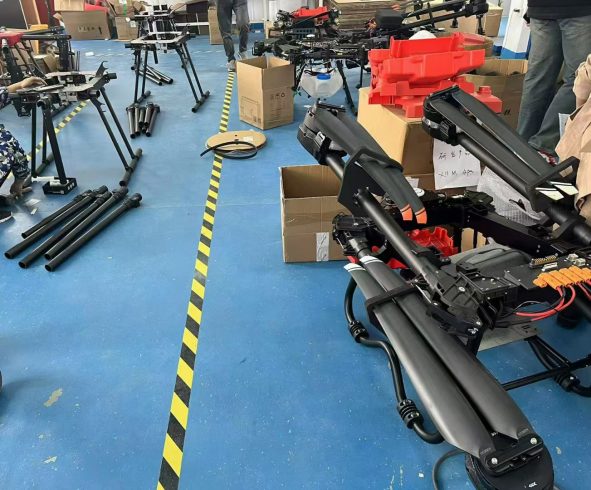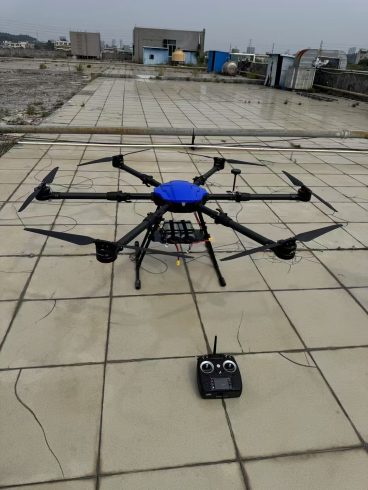![图片[1]-How Crop Spraying Drones Work: A Step-by-Step Explanation for Modern Farming-msoen](https://www.msoen.com/wp-content/uploads/2025/04/54487bc6d4215007-768x1024.jpg)
Crop spraying drones are revolutionizing agriculture by combining cutting-edge technology with eco-friendly practices. These autonomous machines enable farmers to apply pesticides, herbicides, and fertilizers with unmatched precision. But how exactly do they function? This guide breaks down the science, mechanics, and workflows behind agricultural drone spraying, offering actionable insights for farmers and tech enthusiasts alike.
Key Components of a Crop Spraying Drone
- Durable Frame and Propellers
- Lightweight materials like carbon fiber ensure agility while carrying payloads.
- Multi-rotor designs (4–6 rotors) provide stability, even in windy conditions.
- Smart Spraying System
- Liquid Tank: Stores chemicals (typically 5–20 liters) for targeted application.
- Adjustable Nozzles: Control droplet size to match the task (e.g., fine droplets for herbicides, coarse for fungicides).
- Flow Pump: Maintains consistent pressure for uniform coverage.
- Navigation and Sensor Suite
- High-Precision GPS: Maps fields with centimeter-level accuracy to avoid overlaps or gaps.
- Obstacle Detection Sensors: LiDAR or infrared sensors prevent collisions with trees, poles, or uneven terrain.
- Multispectral Cameras: Capture crop health data to guide real-time spraying decisions.
- Battery and Power Efficiency
- High-capacity batteries offer 15–30 minutes of flight time, depending on payload and speed.
- Quick-swap systems minimize downtime during large-scale operations.
The 5-Step Process of Agricultural Drone Spraying
- Pre-Flight Field Mapping
- Farmers use drone-compatible software to upload field boundaries and identify high-priority zones (e.g., pest-infested areas).
- The drone generates a 3D map using GPS and terrain data, optimizing flight paths for efficiency.
- Mission Configuration
- Spray Parameters: Set droplet size, flow rate, and altitude (typically 2–4 meters above crops).
- No-Spray Zones: Mark sensitive areas like water sources or organic crops to avoid contamination.
- Autonomous Flight and Spraying
- The drone takes off and follows pre-programmed routes, adjusting speed (4–8 m/s) based on wind conditions.
- Real-time sensors monitor environmental factors (humidity, wind speed) to reduce drift. For example, if wind exceeds 10 mph, the drone automatically lowers altitude or pauses spraying.
- Nozzles activate only over target areas, guided by multispectral data showing crop stress or pest activity.
- In-Flight Adjustments
- AI algorithms analyze live camera feeds to detect missed spots or uneven coverage.
- The drone recalibrates its path or spray volume to ensure 95%+ accuracy.
- Post-Spray Analysis
- Multispectral cameras capture post-application imagery to validate coverage.
- Farmers review data (e.g., NDVI maps) to track crop recovery and plan follow-up treatments.
Core Technologies Behind Precision Spraying
- GPS and RTK Positioning
- Real-Time Kinematic (RTK) systems correct GPS signals to achieve 1–2 cm accuracy, critical for avoiding overlaps.
- AI-Powered Decision-Making
- Machine learning algorithms process crop health data to adjust spray patterns dynamically. For instance, areas with low nitrogen levels receive extra fertilizer.
- Drift Reduction Systems
- Ultrasonic sensors measure wind speed, while nozzles adjust droplet size to minimize chemical drift.
- Cloud Data Integration
- Flight logs, spray maps, and crop health reports sync to cloud platforms for long-term analysis and compliance tracking.
Benefits of Drone Spraying Over Traditional Methods
- Precision: Reduces chemical use by 30–50% compared to tractor sprayers.
- Speed: Covers 10–15 acres per hour, saving labor costs and time.
- Safety: Operators control drones remotely, avoiding exposure to hazardous chemicals.
- Sustainability: Lowers environmental impact by preventing soil and water contamination.
Challenges and Solutions
- Regulatory Compliance: Always check local regulations for drone licensing and approved chemicals.
- Battery Limitations: Use swappable batteries and charging stations for large farms.
- Weather Dependence: Schedule spraying during calm, dry hours for optimal results.
The Future of Drone Spraying Technology
Emerging innovations like swarm robotics (multiple drones working in sync) and hyperspectral imaging will further enhance efficiency. Industry studies predict that AI-driven drones could reduce global pesticide use by 60% by 2030.
Conclusion
Understanding how crop spraying drones work empowers farmers to adopt smarter, greener practices. By leveraging GPS precision, AI analytics, and automated workflows, these machines deliver unparalleled efficiency and environmental benefits. Whether you’re managing a small plot or vast farmland, integrating drone technology can optimize your operations and contribute to sustainable agriculture.











暂无评论内容